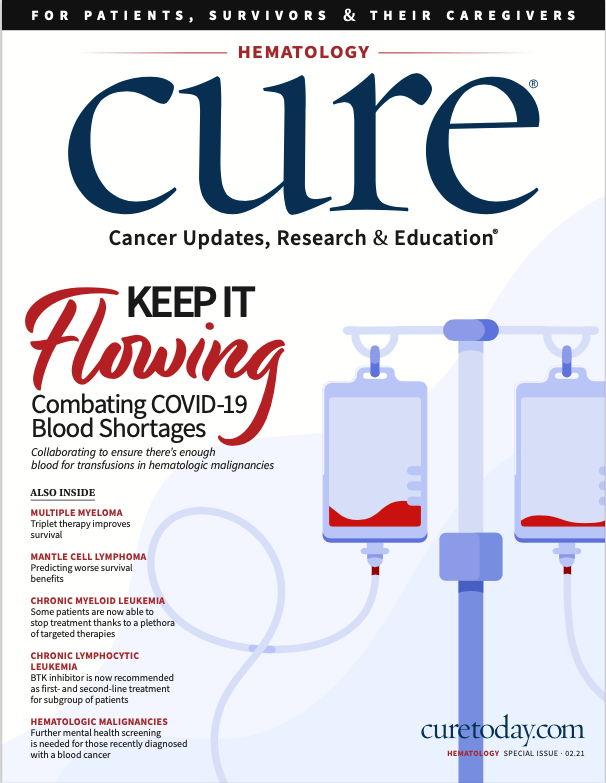Publication
Article
CURE
Treatment Advances Transform CML Into Chronic Disease
Author(s):
Over the past decade, advances in both diagnostics and therapeutics in a variety of blood cancers have turned certain diseases into chronic conditions.
Over the past decade, advances in both diagnostics and therapeutics in a variety of blood cancers have turned certain diseases into chronic conditions. In particular, chronic myeloid leukemia (CML) has become a disease that used to almost always progress within months to years after diagnosis, but CML now is almost cured thanks to the number of inhibitors made available for treatment and very structured follow-up algorithms and tests.
CML makes up about 15% of leukemias, with the majority of cases occurring in adults. While the number of people diagnosed with CML increased by 2% annually from 2007 to 2016, deaths from the disease decreased by about 1% each year from 2008 to 2017.
This can be attributed, in large part, to recent scientific advances in targeted treatments, all of which were enabled by elegant laboratory studies that identified a genetic mutation that drives this dis- ease. The result of this mutation (a result of a fusion of two genes) creates a growth-driving enzyme known as the BCR-ABL kinase that can be targeted with synthetic molecules that block its activity.
For most with CML, treatment doesn’t end, as patients stay on a tyrosine kinase inhibitor (TKI) indefinitely to keep their disease in check. Currently approved by the Food and Drug Administration, TKIs for the treatment of CML include Gleevec (imatinib) — which was the first to be approved in this disease space in 2001 — as well as Bosulif (bosutinib), Sprycel (dasatinib), Tasigna (nilotinib) and Iclusig (ponatinib). Blood analyses that can detect tiny amounts of RNA made from the BCR-ABL fusion gene allow for very early detection of resistance to therapy and the need to change to another drug.
Following the addition of these TKIs to the treatment armamentarium, the five-year survival rate for patients diagnosed with CML has more than tripled since the mid-1970s.
With such advances, we’ve allowed patients to return to the life they had before cancer, but it is also key to emphasize that patients will be monitored for the rest of their lives.
Next, the key question has become: Can I safely stop treatment? We are seeing more and more that for some, this is possible, while others have the option to lower the dose they are taking to minimize side effects.
For more news on cancer updates, research and education, don’t forget to subscribe to CURE®’s newsletters here.





